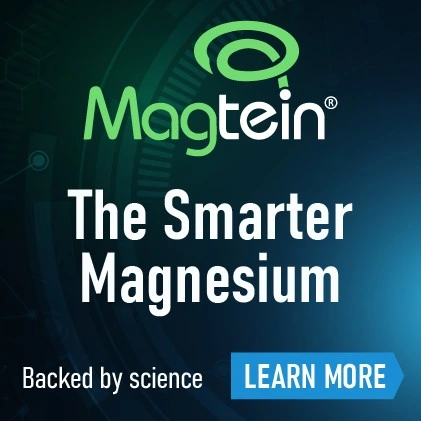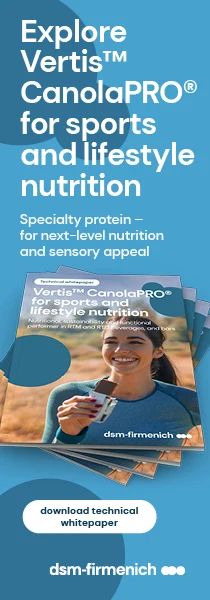“People don’t buy or eat science”: Real food is the next sports nutrition trend, says industry analyst
28 Oct 2019 --- The greater mass of people interested in active nutrition are influenced by broader consumer trends of wanting foods to be more natural, less processed and low-sugar. This is according to Julian Mellentin, Food Industry Analyst and Director of Consultancy New Nutrition Business, who tells NutritionInsight that real food is the next big trend in sports nutrition, as consumers seek to deviate from gels and sports bars applications. Naturality in ingredients is an overarching industry trend that is seeing accelerated growth. According to Mellentin, real foods for sports nutrition is also becoming the mainstream advice offered from professional and dietary nutrition sources.
Mellentin says that the sports nutrition consumer segment has two sides. “First, there are people who traditionally bought sports nutrition products and want the most effective ingredient to improve their performance, such as creatine or the best proteins and are open to all the new technologies,” he says. The other side is those who want natural, minimally processed products, in accordance with broader consumer trends.
The sports nutrition expert previously penned a report titled “‘Real food’ – the strategy that’s transforming sports nutrition.”

Clean label and natural products
Clean label and a short ingredient list have long been prevalent industry trends. Innova Market Insights still reports 13 percent CAGR in food and beverage launches with a clean label claim (Global, 2013-2017). Moreover, products with this type of positioning accounted for 29 percent of global new launches in 2017.
 Real food is the next big trend in sports nutrition.In sports nutrition, applications such as bars, gels and powders have been staples that sports people reach out for. However, such applications – even though convenient and supported by the right ingredients – often do not tap into the consumer trend for naturality.
Real food is the next big trend in sports nutrition.In sports nutrition, applications such as bars, gels and powders have been staples that sports people reach out for. However, such applications – even though convenient and supported by the right ingredients – often do not tap into the consumer trend for naturality.
“We [New Nutrition Business] first flagged the real food idea about four years ago. We published in a trend analysis about sportification across all categories, from clothing to food and beverage,” Mellentin notes.
“Gels were commonly used by athletes but people said they didn’t seem natural or taste good. That resulted in natural gels for sports NPD. This is much bigger than scientific sports moving into the mainstream. People don’t buy science, people don’t eat science. Unless they have a specific reason to buy something to fix a problem, science is not their first choice. Science is also often premium,” he says.
Cost and mainstream sports nutrition
Cost is also a concern, Mellentin notes. “Cost really adds up for the normal person doing fitness. Lower cost and more natural is a more realistic approach. This is really propelling growth. If you’re an ingredients company, you can’t ignore this trend. You need to figure out where you will fit in.”
For sports nutrition to be accessible and effective, the real foods approach is necessary. “Sports nutrition hasn’t been mainstreamed, protein has been mainstreamed,” he highlights.
Because sports nutrition is a huge, all-encompassing term, it is not immediately clear to what extent this category is mainstream or not. “You often hear sports nutrition is going mainstream. To an extent, that is true. Protein has gone mainstream because its benefits are widely understood. But, beyond protein, very little of sports nutrition has gone mainstream. Many people are deterred by technical-sounding ingredients. Protein is leading that mainstreaming, as it fits people’s idea of being natural. It can align with their general food beliefs and preferences,” Mellentin says.
What would a smart brand do?
Mellentin supports that sports nutrition companies recently saw immediate and exponential growth rates, with sales reaching the millions, but as it is a high margin business, this growth reaches a plateau or a significant decrease. “They may do well for a while and then fall back, or even disappear. And then the next thing comes along,” he says.
 Real foods for sports nutrition is even supported by nutrition specialists and dietary counselors, Mellentin notes.Real foods for sports nutrition is even supported by nutrition specialists and dietary counselors, Mellentin notes. The US sports dietitians organization Collegiate and Professional Sports Dietitians Association (CPSDA) fundamental principle “Food First: Wholefoods are the best fuel” echoes this observation, he says.
Real foods for sports nutrition is even supported by nutrition specialists and dietary counselors, Mellentin notes.Real foods for sports nutrition is even supported by nutrition specialists and dietary counselors, Mellentin notes. The US sports dietitians organization Collegiate and Professional Sports Dietitians Association (CPSDA) fundamental principle “Food First: Wholefoods are the best fuel” echoes this observation, he says.
Industry players should decide on which route to take when developing new products, Mellentin maintains. “If you’re a sports nutrition company, ask yourself, am I going to do a typical, technical NPD or a range that appeals more broadly to consumers? Clever companies may have two different ranges. A more technical brand, as well as wholefood offerings,” he says.
“Where do ingredients fit in? Companies have made the assumption that sports nutrition is mainstreaming and magic ingredient X will become big one day. This isn’t going to happen, unless their ingredient can make sense to the every day, real-food market,” he adds.
Some of the big companies are doing excellent work, he says, such as Beneo. It is connecting its ingredient to the consumer in a way that makes sense. “Too many companies are so in love with the ingredients and the science, they don’t think about how to make it make sense in a product that people will buy,” Mellenting notes.
However, early-stage brands are taking traditional foods and reinventing them to make them more palatable and interesting and suitable to sports, he highlights. Veloforte, for example is crafting premium traditional Italian panforte. The company has a business in London and produces a sportified Veloforte with higher protein.
“In the UK and example product would be the soreen, which was a traditional fruit-based cake not experiencing growth. The company discovered cyclists were using it to give them energy on long rides, so they repositioned themselves as an on-the-go, permissible snack,” he concludes.
By Kristiana Lalou and Laxmi Haigh















